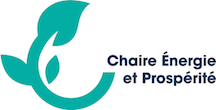We analyze the impact of agricultural productivity growth on tropical deforestation. Our dynamic model of forest-to-farmland conversion incorporates costs and market constraints on agricultural output, emphasizing that productivity growth, rather than its absolute level, shapes deforestation patterns. Addressing the Jevons’ paradox and Borlaug hypothesis, the model predicts that rising agricultural productivity, reflected by declining fertilizer price growth, has an ambiguous effect on deforestation. Using tropical forest loss data (2000-2022) and fertilizer price variations, we find a negative correlation between fertilizer price growth and deforestation, particularly in regions with high market potential. Without the 10% annual rise in fertilizer prices over the period, deforestation rates would have been 57% faster, representing 6.6 million additional hectares annually. Conversely, the 3% annual increase in crop prices has a minimal impact on deforestation. Our results highlight that protected areas do not mitigate the adverse effects of fertilizer price growth on deforestation.
No Upcoming Events found!

